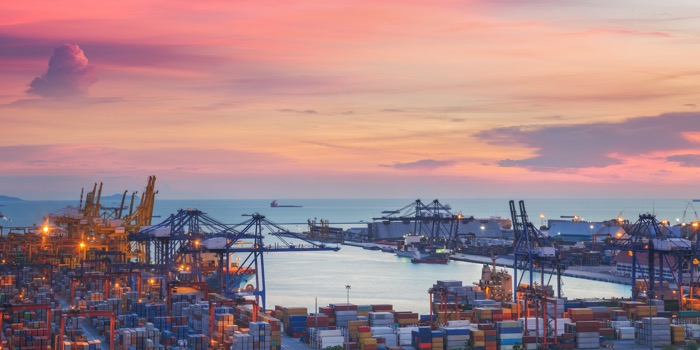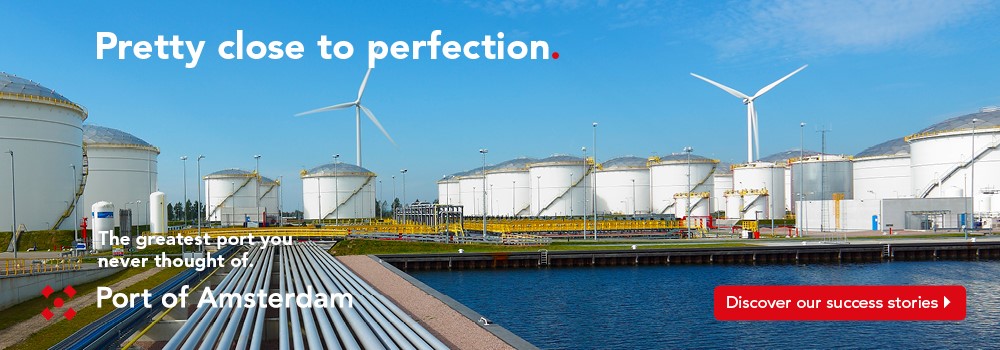A strong relationship between ports and their customers is the key for driving real supply chain value
Ports have been the global gateways for goods and people for millennia. But today the modern major port offers the potential to drive real supply chain value for port customers and the beneficial cargo owners. A panel discussion hosted by UKMPG member DP World at the recent Multimodal exhibition explored this topic.
The panel brought together a great cross section of businesses. HALO, a logistics solutions provider to multiple importer and exporter partners focused on time critical, perishable foods. Import Services, who manage retail supply chains from product origin in regions such as Asia to customer delivery in the UK and across Continental Europe. Sofology, an innovative, customer experience focused home furniture retailer with global supply chains.

As you’d expect with organisations in different sectors and with different positions in the supply chain they each had their own business drivers and dynamics. But despite this, what was striking were important commonalities. The complexity and tight timelines that they face to deliver their ‘customer promise’ against, the need to deliver responsiveness and solutions not just goods, as well as the importance of visibility and assurance to their customers.
There was also a clear, common view that ports could and should have an important role in enabling them to meet these challenges and create real value.
How does that happen? Listening to the speakers a number of themes emerged:
- Colocation. Physical proximity can deliver big benefits. It clearly drives out time, absolutely critical for many categories of goods. It gives more opportunity to reduce handling and moves, reducing all-important costs. But the benefits are not just economic, there are also environmental and emissions benefits from shorter distances travelled and removing the need for intermediary moves. Gavin Knight of HALO couldn’t have been clearer about what a port-centric location was delivering “We’re eradicating cost, we’re eradicating time and we’re eradicating environmental impact”;
- Real, meaningful relationships. ‘Relationships’ is an easy word to say, a difficult thing to really deliver, but so important when it can be achieved. Panel members described real world examples where the strength of the relationship between the port, the immediate customer and directly with the end beneficial cargo owner delivered real benefits in terms of flexibility, prioritisation and going the extra mile. These relationships come from both parties investing the time in deeply understanding each other’s businesses, not just at managerial levels but sometimes at operator level. And not just port customers but their end customer too; and
- Visibility and transparency. All the panellists talked about the importance of transparency and visibility to drive both more efficiency and a better end customer experience. Simon Phillips summarised the challenge “How do you enhance the customer’s journey through the life of an order?” This was linked in many real experiences with the strength of the relationship between port and customer. But also – and increasingly important – is the data and systems collaboration between different players in the logistics supply chain.
None of this, of course, is static. Ports and their customers have to exist and thrive in a relentlessly competitive environment. Resting on laurels is a recipe for disaster. So it was great to look forward with the panellists as well. The particularly striking aspect of future gazing was the importance of taking data visibility and sharing to the next level.
As Mike Thomas of Import Services put it “We happen to be more of a technology business… than a logistics company and that is the future”. There was a call for more systems integration, including the introduction of customer-centric middleware. This stronger data integration is not a substitute for strong direct relationships between port and customer but builds on the essential foundation of understanding that these relationships deliver.
The direction of travel is towards more integrated supply chains to deliver more demanding and complex customer solutions. Against this challenging context the importance of the direct relationship between ports and their customers – both physical and digital – is ever more crucial.
For more information visit www.ukmajorports.co.uk
15th July 2019


















